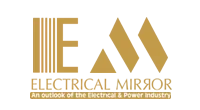The plug-in Electric Vehicle Market is projected to grow from USD 698.63 billion in 2025, and reach USD 1,189.59 billion in 2035, growing at a CAGR of 5.5%, according to a new report by MarketsandMarkets™.
The hybrid electric vehicle market (HEV+MHEV) is set to grow from USD 446.87 billion in 2025 to USD 667.75 billion in 2035, at a CAGR of 4.1%. The plug-in electric market is on a steady growth path, supported by rising consumer demand, government mandates for lower emissions, and advancements in battery and charging technologies that enable higher driving ranges, lower battery costs, and faster charging times. The development of charging infrastructure is also expanding to support this shift.
Improvements in energy-dense batteries, efficient thermal management systems, and lightweight vehicle designs are driving the creation of new EV products and solutions that meet evolving customer expectations. As the market evolves, both plug-in hybrid and fully electric platforms are creating overlapping demand for components.
This has led to increased use of conventional powertrain parts alongside EV-specific solutions such as lithium iron phosphate (LFP) battery packs, high-efficiency inverters, and advanced cooling systems. Automakers adjust their product lines to meet this blended demand while ensuring performance and reliability.
OEMs are making targeted investments to address cost and adoption challenges. Tesla is expanding localized battery production with its Gigafactories in the US and Mexico, while Volkswagen is investing in software-driven energy management systems to optimize efficiency.
Hyundai is building scalable EV platforms to serve multiple vehicle types across regions. These initiatives help improve cost structures and accelerate EV adoption by making vehicles more affordable and efficient. Partnerships between automakers and suppliers are also growing, helping to overcome supply chain disruptions, meet safety standards, and enhance performance.
Combined with government incentives, tax credits, and increased consumer awareness, these developments are redefining mobility trends and reinforcing the long-term outlook for electric vehicles.


